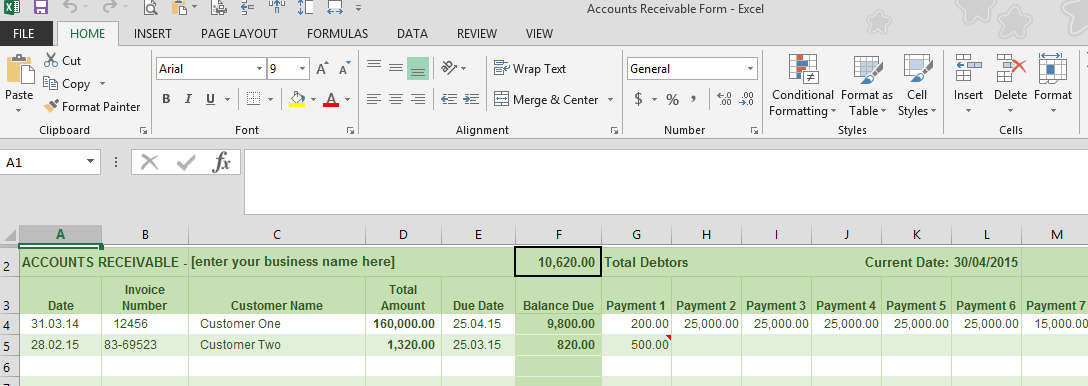
Some say that they fit in with the existing accounting standards, while others state there is a need to develop a new regulatory framework that will decrease the probability of fraud (Auer, 2019; Pimentel et al., 2019). For example, there is a high demand for developing regulations for ICOs, cryptoassets that do not offer investors concrete products or services but provide an opportunity for capital gains from reselling cryptocurrencies in the future (Zhang et al., 2021). In December 2017, SEC Chairman Jay Clayton stated that ICOs are vulnerable to fraud and manipulation because there is less investor protection than in the stock market (Clayton, 2017). Papers on this topic are mostly written from the perspective of a company implementing blockchain. Opportunities range from improved efficiency, transparency and trust to the high potential of new business models and ecosystems that evolve due to blockchain. Challenges include potential risks related to blockchain implementation, the influence of context and a high demand for energy consumption.
8 Analysis criteria

You can divide blockchain technology into two main umbrella groups — public and private. While both function using the same group validation system, they differ in who can access the blockchain. Accountants may no longer need to memorize best practices pertaining to extensive documents and periodic controls. Blockchain education may become key to the training of accountants, with those accountants who https://www.adprun.net/ understand blockchain most likely to succeed in a blockchain-recorded world. The decentralized ledger system of blockchain provides a great deal more security than do traditional methods of bookkeeping because each transaction is validated many times over. It also records every transaction that passes through a computer, and, just like with double-entry bookkeeping, it does so in chronological order.
Take a look at ICAEW training films
Immutability is a desirable feature for accounting systems because it prevents manipulation, but the way that blockchain achieves this goal is subject to criticism. Indeed, Coyne and McMickle (2017) note that a public accounting blockchain cannot be created because entities do not want to make all their accounting entries public and a private blockchain would not increase assurance because it would not be immutable (O’Leary, 2017). Figure 1 shows the distribution over time of the included research products. The green line represents all 127 research products that belong to the “Accounting and Auditing” topic. The yellow line depicts articles published in journals ranked as “ACCOUNT” by the ABS AJG2021 journal ranking. Figure 1 shows a considerable increase in interest since 2016, in which year accountants and practitioners began to seriously consider blockchain as an accounting tool (Kokina et al., 2017).
How can Blockchain technology transform the Accounting industry?
- It is important to consider multicollinearity and CMB in the measurement model, as they are undesirable factors (Hair et al. 2017).
- We agree that blockchain will impact how accounting information is recorded, but we do not expect that accounting functions will disappear.
- Limitations of current accounting practices allow forpayments to sometimes be made to fake suppliersor transferred to fake bank accounts.
- Additionally, this study aligns with earlier research by Venkatesh and Davis (2000), Al-Hattami (2023), and Mukherjee et al. (2023), which confirmed the link between PU and behavioral intention.
In light of these insights, it becomes evident that fostering a robust culture of organizational support is paramount for realizing the full potential of blockchain technology in accounting education. Educational institutions can foster an environment where faculty members can embrace innovative teaching and learning by prioritizing initiatives that promote training, assistance, and resource allocation. Thus, investing in organizational support emerges as a strategic imperative for educational institutions seeking to harness the transformative power of blockchain technology in the realm of accounting education. Following this introduction, the second section presents the details of our SLR methodology and introduces bibliometric visualizations of the 346 included research products.
Blockchain in accounting practice and research: systematic literature review

The second risk is transaction malleability, which occurs when an attacker copies a transaction and modifies it to receive tokens (payment) then claims that no tokens were ever received. The third risk relates to flawed smart contracts that can hide malicious code or another contract with a weakness. This risk highlights the need for independent external auditors to approve transactions before the contract enters the blockchain. In short, the ability of blockchain to store records makes it a target for potential cyberattacks. Therefore, to ensure the security of information in a blockchain, there is a need to implement internal and cybersecurity controls that consider privacy preservation issues (Chohan, 2017; Coyne and McMickle, 2017; O’Leary, 2017).
Auditing requires the confirmation of transactions and balances on firms’ accounting ledgers at the end of the reporting period due to time-lags, reconciliations, and accounting entries. Auditing With BlockchainAuditors view financial statements of both public and private organizations and audit them to provide the users assurance that those statements fairly present the financial position and results of operations of the company. Users control the addition of millions of transactions trying to post a sync at once by grouping these into blocks and adding blocks one at a time, in sequence. And now, the accounting and audit professional needing to understand, they don’t need to understand hashing. That’s a spot for the accounting audit professional to understand, “This is an ecosystem I need to keep up on.” And that the tools for that ecosystem are beginning to appear.
SSRN is the leading social science and humanities repository and online community that provides “tomorrow’s research today” (Gordon, 2016). With more than 950,000 papers from over half a million authors in the e-library, SSRN offers an extensive pool of research ideas that can be tracked before publication to detect emerging research topics and current trends. Here, we searched for “accounting” AND “blockchain” or “accounting AND distributed ledger” over the same period and found 68 papers, some of which overlapped with papers already retrieved. These were excluded, plus we also excluded any of the papers that had subsequently been published in a non-accounting journal or an accounting journal not ranked by ABS or ABDC.
Kumar et al. (2022) examined factors influencing blockchain adoption in higher education and discovered that a favorable attitude toward using blockchain technology positively impacted the behavioral intention to adopt it. Building on this foundation, the current research assesses the effect of ATU on the intention to adopt and integrate blockchain technology in accounting education. On the other hand, AlShamsi et al. (2022), in their systematic review, noted that previous studies have largely focused on the adoption cash budget template of blockchain technology at the organizational level, overlooking the individual perspective. Chen et al. (2018) praised the benefits of blockchain and suggested its use in the education sector to support academic degree management, reduce degree fraud, and evaluate learning outcomes. Other review studies (e.g., Mohammad and Vargas, 2022; Bhaskar et al. 2021; Dash et al. 2022) found that while blockchain has advantages, it still faces challenges, and its acceptance in the education sector remains low.
It cuts out the intermediaries, lowers the chances of mistakes, and shows the latest data. While new challenges are bound to rear their heads, the potential benefits far outweigh the obstacles. As businesses continue to adopt and adapt to this technology, the future of Accounting looks promisingly decentralised and secure. In an Accounting system using Blockchain, all https://www.kelleysbookkeeping.com/appraisal-value-vs-market-value/ financial transactions are recorded on a shared digital ledger. This ledger is accessible to all participants within the network, eliminating the need for intermediaries and minimising the risk of data inconsistencies. Each transaction is time-stamped, encrypted, and linked to the previous transaction, creating an immutable and transparent chain of financial events.
Tiscini et al. (2020) explore blockchain adoption as a sustainable business model innovation in the agrifood industry. Bavassano et al. (2020) focus on the shipping industry, where blockchain can be used to improve international administrative procedures, but a lack of standards, particularly those imposed by regulation, represent the highest barriers in this context. Blockchain might be helpful in terms of accounting for renewable energy and carbon credits, which are intangible tradable items created to provide additional financial incentives to clean energy producers (Ashley and Johnson, 2018; Tang and Tang, 2019). Hojckova et al. (2020) study the success factors of blockchain-based P2P electricity trading.
It safeguards the sensitive data and confirms that the transaction occurred at a specific time. Smart Contracts can also enhance security and trust between clients and organisations by preventing fraud and scams. Moreover, once the algorithm is deployed, all the functions operate automatically without manual support. Consent was not deemed necessary for this study, as the data collected using the anonymous identity of the respondent. It is important to consider multicollinearity and CMB in the measurement model, as they are undesirable factors (Hair et al. 2017). According to Hair et al. (2017) and Kock (2015), a VIF value should not exceed 5 to suggest the absence of multicollinearity and should not exceed 3.3 to suggest the absence of CMB.
Furthermore, accounting faculty members’ attitudes towards blockchain emerge as a significant determinant of its adoption in accounting education. A positive attitude towards blockchain technology fosters a favorable environment for its integration into the curriculum, encouraging experimentation and exploration of its potential applications in accounting pedagogy. Furthermore, adequate organizational support emerges as a key enabler for facilitating the successful adoption and integration of blockchain in accounting education. Educational institutions and policymakers need to recognize the importance of providing resources, training, and institutional support to empower faculty members to effectively incorporate blockchain technology into their teaching practices. In conclusion, the application of TAM to the realm of blockchain adoption within accounting education underscores the pivotal role of various factors in shaping faculty members’ intentions to incorporate blockchain into their curriculum.
Companies that incorporate blockchain into their accounting systems therefore may reduce their risk of fraud (Dai et al., 2017). Using blockchain might also mean more transactions can be automated, less data are lost, transactions can be tracked better and users’ needs throughout the process can be detected more easily (Fullana and Ruiz, 2021; Bonsón and Bednárová, 2019). However, the primary and most valuable difference between traditional databases and blockchain is its novel solution to control whereby transactions cannot be deleted or changed (Coyne and McMickle, 2017; Dai et al., 2017). This study’s analysis combined a structured literature review with citation analysis, topic modelling using a machine learning approach and a manual review of selected articles. The corpus comprised 153 academic papers from two ranked journal lists, the Association of Business Schools (ABS) and the Australian Business Deans Council (ABDC), and from the Social Science Research Network (SSRN). From this, the authors analysed and critiqued the current and future research trends in the four most predominant topics of research in blockchain for accounting.
The study utilizes purposive sampling to focus on faculty members in Indian universities and colleges. This approach aims to accurately represent the specific population of interest, thereby enhancing the study’s relevance to the context under investigation (Hair et al. 2017; Creswell and Creswell, 2017). (2020), “Challenges when auditing cryptocurrencies”, Current Issues in Auditing, Vol. Christ and V Helliar (2021) show that blockchain also makes it possible to monitor workers’ rights, but there are some privacy concerns that must be addressed.